Just two days after the Ibis Ripmo won the title of 2020’s best trail bike, the American brand already sent us it’s successor. For the Ripmo 2, they’ve done a lot to increase downhill performance, but will the bike still be as versatile as before? We tested it extensively and had it go head to head with its predecessor.

What has changed on the new Ibis Ripmo 2?
Before we start with the differences, let’s look at its similarities with the previous Ripmo. The Ibis Ripmo 2 is a trail bike with 147 mm travel at the rear (it had 145 mm before to be accurate) and 160 mm up front. As you’d expect from Ibis, the bike features DW-Link suspension with a virtual pivot point. Ibis provide a lifetime warranty on the bushings of the lower rocker link, which is nice to know. The bike features a full carbon frame and is compatible with up to 2.6” wide tires.


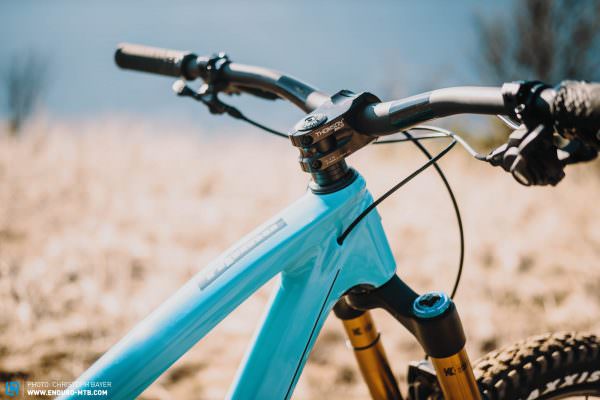


Compared to its predecessor, the Ripmo 2 has a 1° slacker head angle, and depending on the frame size, between 2–14 mm increase in reach, and more progressive suspension. The differences are not apparent at first glance, but if you look at the frames next to each other, you can see that the front shock mount has moved down significantly. So, Ibis didn’t just give the bike a new rocker link, but they redesigned the whole front triangle. However, they’ve made no changes to the rear triangle. The chainstays remain at 435 mm for all frame sizes. A nice little detail is the added protection to prevent stones from getting jammed in the rocker link, which has often been the cause of unsightly scratches.
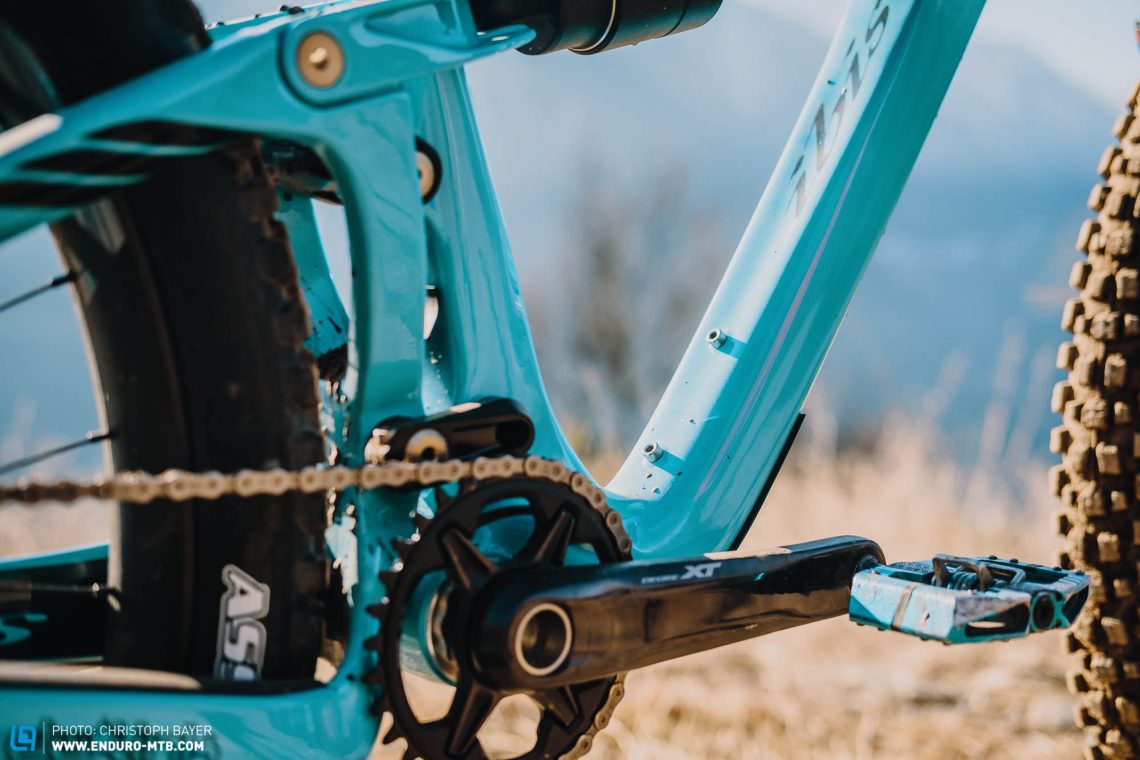


The geometry of the new Ibis Ripmo 2 at a glance
Longer and slacker, this best describes the changes in geometry of the Ripmo 2. The reach is 2–14 mm longer, depending on size, coming in at 475 mm in size L. The head angle has been slackened by 1° compared to the predecessor, now sitting at 64.9°. The seat tube angle, on the other hand, has remained unchanged – it is still pleasantly steep at 76° and a straight seat tube. Speaking of the seat tube, it has been made slightly longer, though it is still nice and short at 419 mm in size L while offering a generous amount of kink-free dropper post insertion depth. Speaking of which, the size L bike comes with a 175 mm dropper post as standard – brilliant.
| Size | S | M | L | XL |
|---|---|---|---|---|
| Seat tube | 14″ | 14.5″ | 16.5″ | 18.5″ |
| Top tube | 573 mm | 603 mm | 632 mm | 655 mm |
| Head tube | 90 mm | 100 mm | 110 mm | 120 mm |
| Head angle | 64.9° | 64.9° | 64.9° | 64.9° |
| Seat angle | 77° | 77° | 76° | 76° |
| Chainstays | 435 mm | 435 mm | 435 mm | 435 mm |
| BB Height | 341 mm | 341 mm | 341 mm | 341 mm |
| Wheelbase | 1,187 mm | 1,219 mm | 1,238 mm | 1,267 mm |
| Reach | 433 mm | 460 mm | 475 mm | 500 mm |
| Stack | 609 mm | 619 mm | 628 mm | 640 mm |
The componentry of the Ibis Ripmo 2
When they came to speccing the Ripmo 2, Ibis remained true to their concept and offer the bike in various build kits or as a frame set by itself. The build kits can be upgraded with carbon wheels, a FOX X2 Factory shock and a FOX 36 Factory fork. The prices vary between € 3,699 for the frame set including shock, € 4,839 for the NX kit and € 9,599 for the flagship XTR model with carbon wheels and Factory suspension. According to us, you’ll get the most bang for your buck from the SLX version for € 5,589, on which we would add an additional € 489 for the FOX 36 Factory fork upgrade.
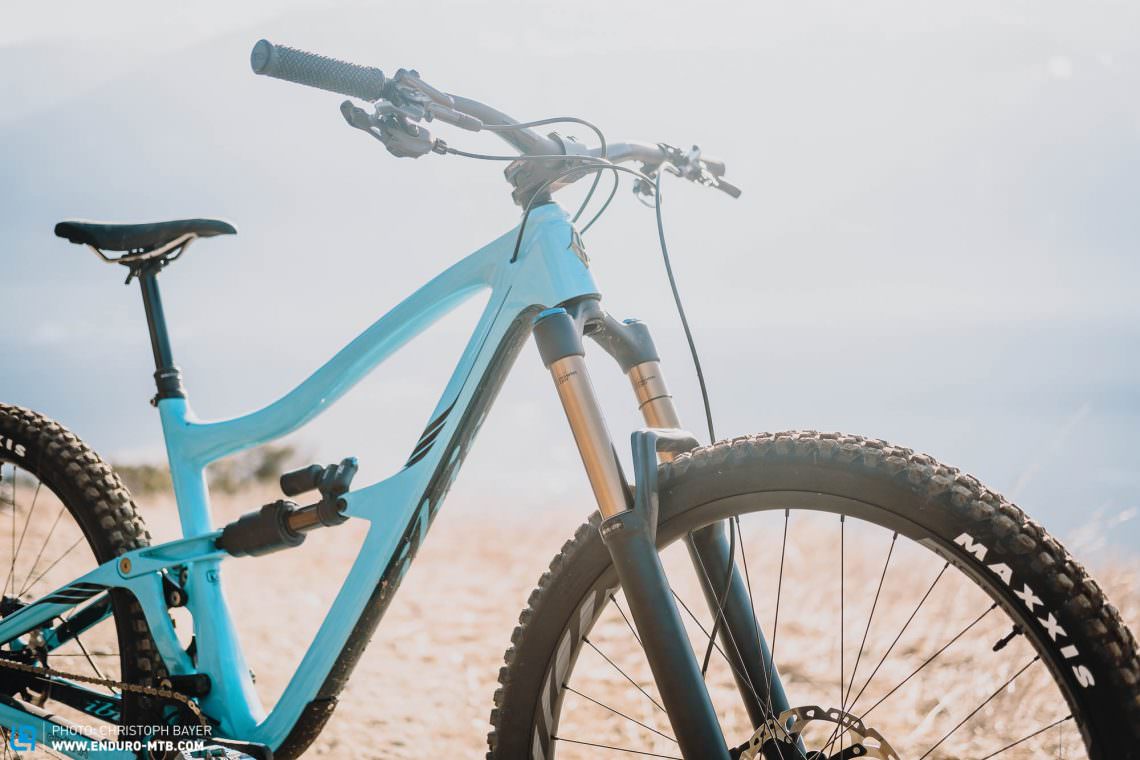

| Spec | NX | SLX | GX | XT | X01 AXS | XTR |
|---|---|---|---|---|---|---|
| Fork | Fox 36 Performance 160 mm |
Fox 36 Performance 160 mm |
Fox 36 Performance 160 mm |
Fox 36 Performance 160 mm |
Fox 36 Performance 160 mm |
Fox 36 Factory Grip 2 160 mm |
| Shock | Fox DPX2 Performance 147 mm |
Fox DPX2 Performance 147 mm |
Fox DPX2 Performance 147 mm |
Fox DPX2 Performance 147 mm |
Fox DPX2 Performance 147 mm |
Fox X2 Factory 147 mm |
| Drivetrain | SRAM NX Eagle | Shimano SLX | SRAM GX Eagle | Shimano XT | SRAM X01 Eagle | Shimano XTR |
| Brakes | SRAM Guide T | Shimano SLX | Shimano Deore | Shimano XT | Shimano XT | Shimano XTR |
| Seatpost | KS Rage-i Dropper 125/150 mm |
Bike Yoke Revive 125/160/185 mm |
Bike Yoke Revive 125/160/185 mm |
Bike Yoke Revive 125/160/185 mm |
RockShox Reverb AXS 125/150/170 mm |
Bike Yoke Revive 125/160/185 mm |
| Stem | Ibis | Ibis | Ibis | Thomson Elite X4 | Thomson Elite X4 | Enve M6 |
| Handlebar | Ibis Aluminium 780 mm |
Ibis Aluminium 780 mm |
Ibis Carbon Hi-Fi 800 mm |
Ibis Carbon Hi-Fi 800 mm |
Ibis Carbon Hi-Fi 800 mm |
Enve M6 780 mm |
| Tires 2.5″ | Maxxis Assegai EXO + WT | Maxxis Assegai EXO + WT | Maxxis Assegai EXO + WT | Maxxis Assegai EXO + WT | Maxxis Assegai EXO + WT | Maxxis Assegai EXO + WT |
The Ibis Ripmo vs the Ripmo 2
To compare the bikes head to head, we traveled to sun-drenched Latsch in South Tyrol for a weekend in early February and found the perfect test conditions. Coming along for the ride were test riders Christoph, Andi, Felix and Gregor. Last of which owned an Ibis Ripmo with a Works headset to slacken the head angle. It was all the more exciting to see how much of a difference we would feel on the new bike.

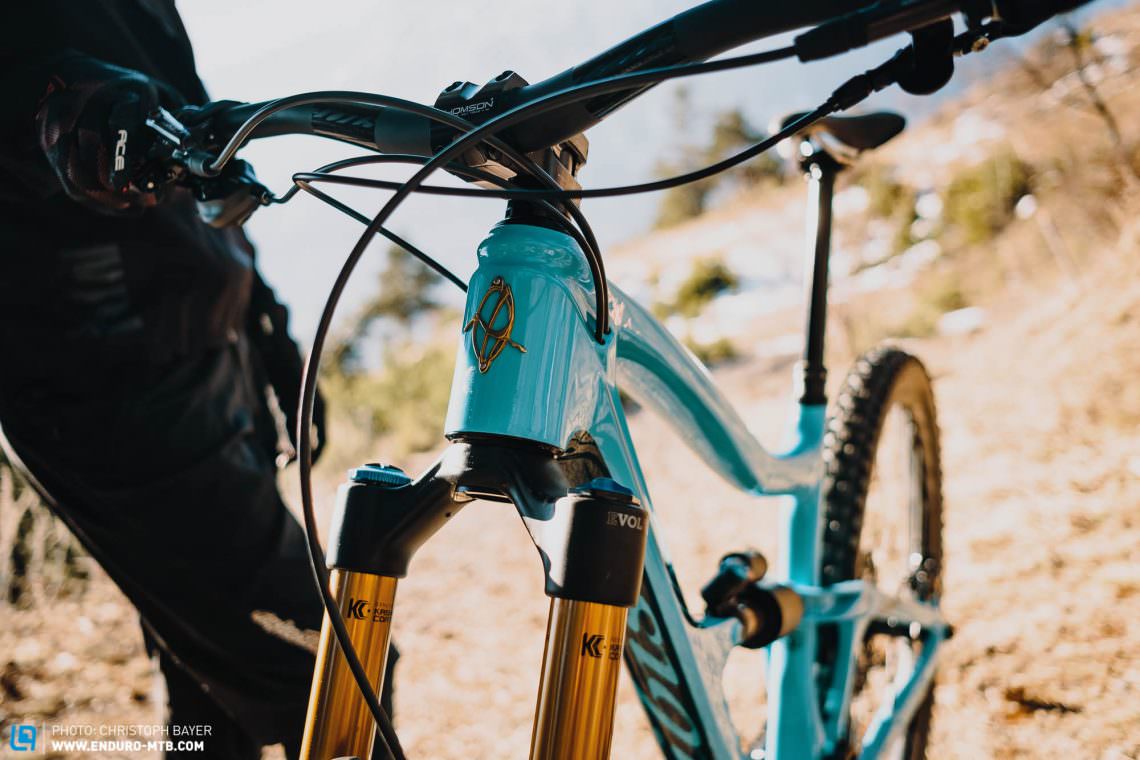
As the data suggests on paper, the differences aren’t dramatic the first time you jump aboard the new Ripmo 2. We set both bikes up with the help of the Ibis’ setup guide. As such, the rebound feels unusually fast, too fast when you test it in the parking lot, but it performs well on the trail.
Since the top tube and seat tube angle haven’t changed, the riding position on the new Ripmo 2 is just as central and comfortable as on the Ripmo. Thanks to the steep seat tube angle, you sit comfortably even on the nastiest climbs. We didn’t attempt any super technical climbs during the test, but we never felt the front wheel want to flop from side to side due to the slacker head angle or the rear end suffer more pedal bob due to the increased progression. The Ripmo 2 is still an outstanding climber that will get you to the top of every trailhead in a relaxed and efficient manner. Accelerating, the bike feels as lively and agile as before.

The previous Ripmo’s greatest strength was its balance. We mean this not only regarding its intended use, but also regarding how easy the bike is to ride. That hasn’t changed with the new Ripmo 2. Each of our test riders immediately felt comfortable on the bike, always able to generate equal amounts of grip on both wheels. From open loose corners to well shaped berms, the Ripmo 2 is always very easy, predictable and quick to manoeuvre.


The king is even better than before!
Despite 145 mm travel at the rear and 160 mm up front, the previous Ripmo is a lot of fun to ride even on flowing trails thanks to the poppy nature of its suspension. The Ripmo 2 is in no way cumbersome, but it feels a little less direct when compared with the previous model, absorbing slightly more of the rider’s input on lips or when pumping it through rollers. At the same time, the plusher suspension of the new Ripmo 2 is also its greatest strength. As it responds more sensitively, the rear suspension offers more traction and increases the bike’s composure and control, and particularly in demanding, rough terrain the new bike leaves its predecessor behind. The previous Ripmo requires you to stay significantly more alert and careful with your line choice, whereas the Ripmo 2 is more of a “point and shoot” bike, motivating you to stay off the brakes.



The Ripmo 2 remains willing to implement quick direction changes. Here, you have a little more room to throw your weight around on the bike. This makes it easy to position yourself optimally on steep descents and balance your centre of gravity for maximum grip through the corners. The seat tube still is short enough to give you as much freedom of movement as possible, which instils you with confidence and makes the bike that much more fun to ride. With so much good, there is very little to criticise on the Ripmo 2, and we were only annoyed by the bike’s noisiness during our test. Shimano’s XT brakes, in particular, rattled very loudly with the cooling fins on the pads. In very rough sections, we could also hear the chain slapping. However, both of these points are easy to remedy.


Our conclusion on the Ibis Ripmo 2
Good things made even better – we already crowned the Ibis Ripmo the best trail bike of 2020 and the Ripmo 2 is even better. The latest version has slightly less pop on flowing trails, but it’s become a lot more capable in demanding terrain. It still climbs excellently and scores with very balanced handling. If you’re looking for the perfect trail bike for every kind of adventure, you will definitely find it here.
Tops
- even more composed in demanding terrain
- balanced and predictable handling
- excellent suspension
- short seat tube for maximum freedom of movement
Flops
- minimally less pop than its predecessor
- annoying rattling of the brake pads
- slight chain slap on rough trails
- expensive
If you’re interested in how the Ibis Rimpo compares to the best trail bikes on the field you may want to go through our current group test (click for review). For more info on the Ripmo 2 head to ibiscycles.com.
Only one question remains: which one would Gregor choose? Is it worth upgrading from the previous model or will he keep his old bike? We believe this picture says it all…
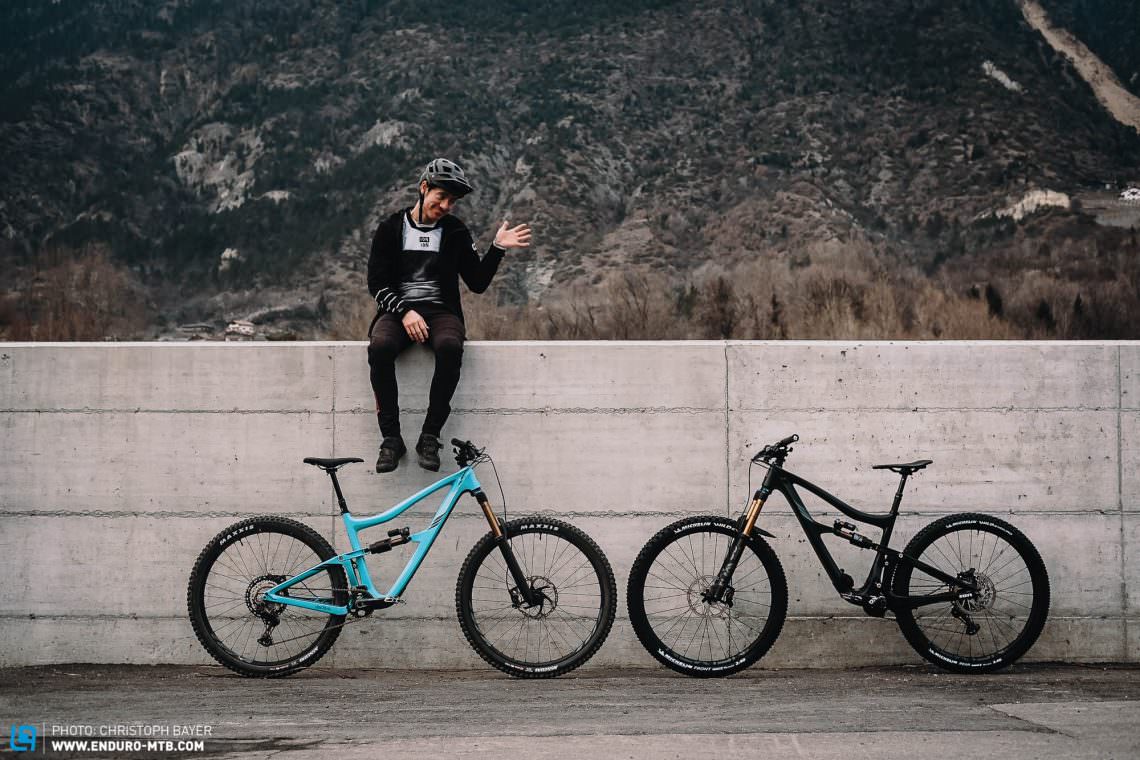
Did you enjoy this article? If so, we would be stoked if you decide to support us with a monthly contribution. By becoming a supporter of ENDURO, you will help secure a sustainable future for high-quality mountain bike journalism. Click here to learn more.
Words & Photos:









